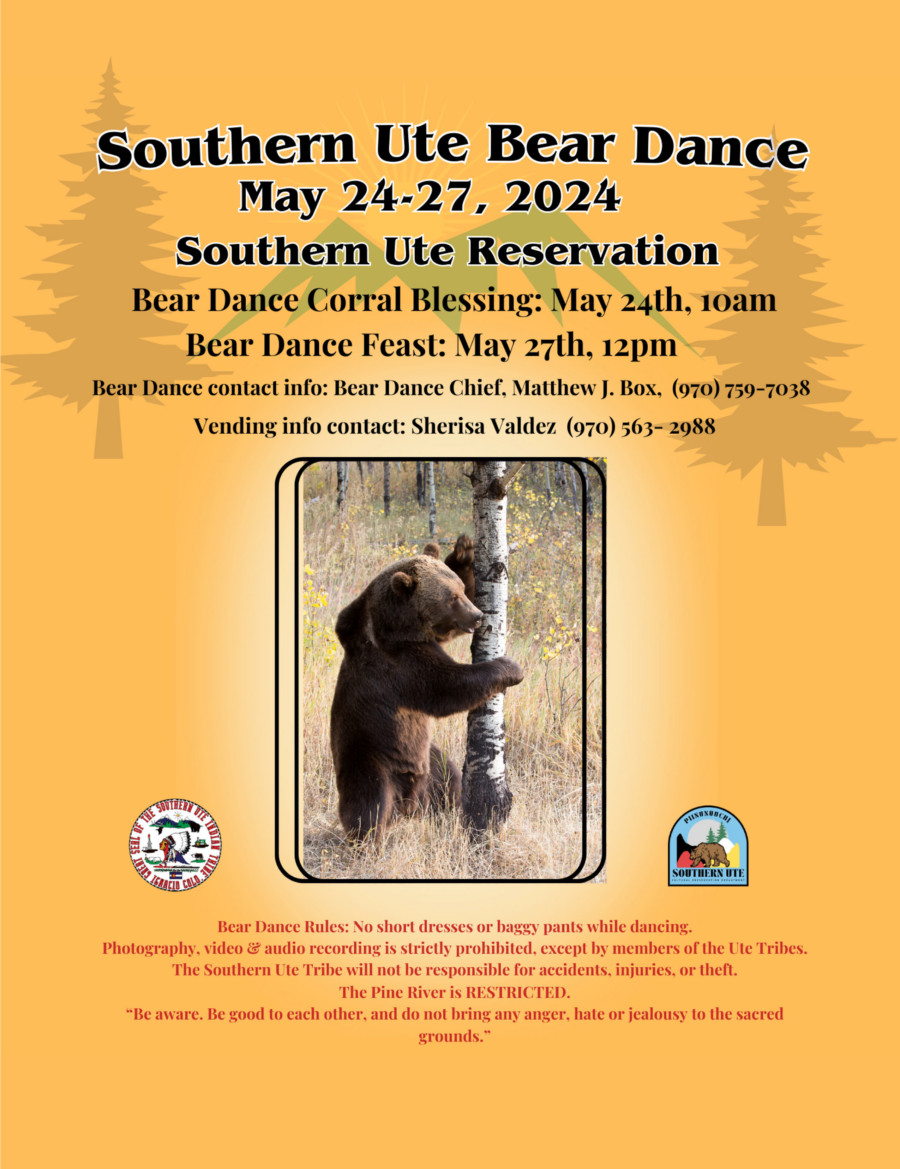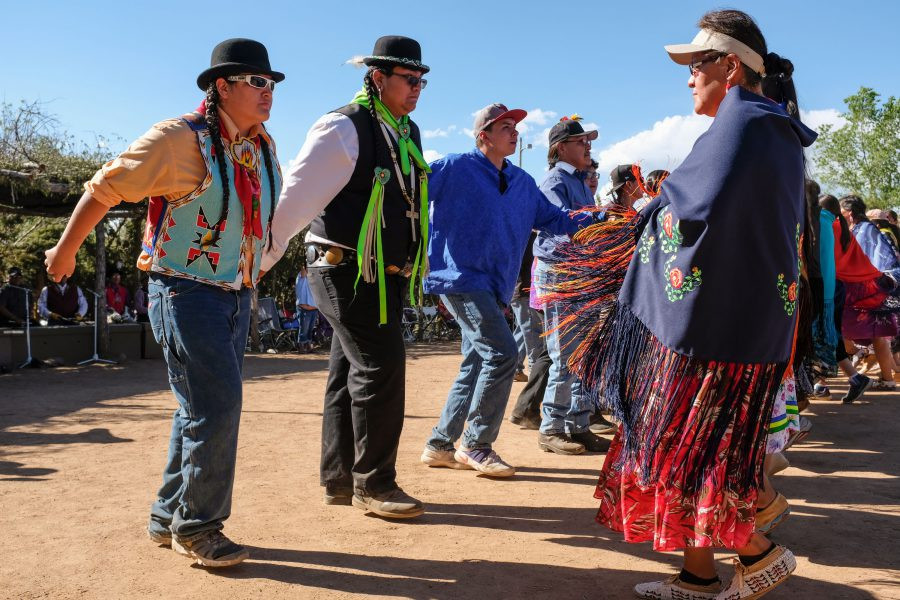The Southern Ute Bear Dance, an annual spring tradition, is a vibrant social dance deeply rooted in the culture of the Southern Ute Tribe. Held every spring, this event is a time of community gathering and celebration. Originating centuries ago, the Bear Dance carries rich history and significance. For those interested in witnessing this cultural dance, searching for a “dancing bear video” online might lead you to discover glimpses of this fascinating tradition. However, to truly understand the Bear Dance, it’s essential to delve into its origins and meaning.
 Southern Ute Bear Dance May 24-27, 2024 Southern Ute Reservation Bear Dance Corral Blessing: May 24th, 10AM Bear Dance Feast: May 27th, 12PM Bear Dance contact info: Bear Dance Chief Matthew J. Box (970) 759-7038 Vending info contact: Sherisa Valdez (970) 563-2988
Southern Ute Bear Dance May 24-27, 2024 Southern Ute Reservation Bear Dance Corral Blessing: May 24th, 10AM Bear Dance Feast: May 27th, 12PM Bear Dance contact info: Bear Dance Chief Matthew J. Box (970) 759-7038 Vending info contact: Sherisa Valdez (970) 563-2988
Image: Event poster for the Southern Ute Bear Dance, showcasing dates, locations, and contact information for the annual cultural celebration.
Tracing the Origins of the Bear Dance
The history of the Ute Bear Dance stretches back to the fifteenth century, coinciding with the arrival of the Spanish and the springtime season. The timing of the dance is traditionally linked to the first thunder of spring, signaling the time for the Bear Dance to commence. Historically, elders recall this period being around mid-March, when various Ute bands would converge, establish camps, and prepare for the ceremonial dance. Singers would ready themselves, recalling or composing songs honed throughout the winter months, ready to contribute to the communal event.
 Bear Dance
Bear Dance
Image: A performance still from a dancing bear video, capturing the movement and energy of participants during the Southern Ute Bear Dance.
The Legend of the Dancing Bear
While modern interpretations have somewhat shifted the original meaning, the essence of the Bear Dance is rooted in a compelling legend. The narrative recounts two brothers hunting in the mountains. During their hunt, one brother observed a bear standing upright, seemingly dancing and making rhythmic noises as it clawed at a tree. This encounter became the foundation of the Bear Dance.
Ute stories further connect this to encounters with small people, referred to as cliff dwellers or Anasazi by archaeologists, highlighting the deep historical layers within their traditions. In the central legend, while one brother continued hunting, the other remained to learn from the bear. The bear imparted the dance and its accompanying songs to the young man, instructing him to share this gift with his people. These songs are said to honor the spirit of the bear, instilling strength in those who participate in the dance.
Significance and Traditions of the Dance
The Bear Dance served as a vital outlet, especially after the long winter months, allowing individuals to release pent-up tensions in a communal setting. As participants enter the dance corral, both men and women traditionally wear plumes. At the conclusion of the four-day event, these plumes are left on a cedar tree at the corral’s east entrance. This act symbolizes leaving behind troubles and embracing a fresh start. The preparation for the Bear Dance also had traditional gender roles; men were responsible for constructing the Bear Dance corral and managing related tasks, while women prepared the ceremonial clothing for their families. Storytellers played a crucial role during winter, educating families about their way of life around the warmth of campfires, passing down knowledge and traditions.
For those seeking a visual understanding of this tradition, a “dancing bear video” can offer a glimpse into the movements, music, and community spirit of the Southern Ute Bear Dance. These videos serve as valuable resources for cultural preservation and education, allowing individuals worldwide to appreciate and learn about this unique and enduring tradition. For further information, resources are available through the Cultural Preservation Department of the Southern Ute Tribe.
This information is based on the article Bear Dance, published by the Southern Ute Drum. For more detailed information, please contact the Cultural Preservation Department.
